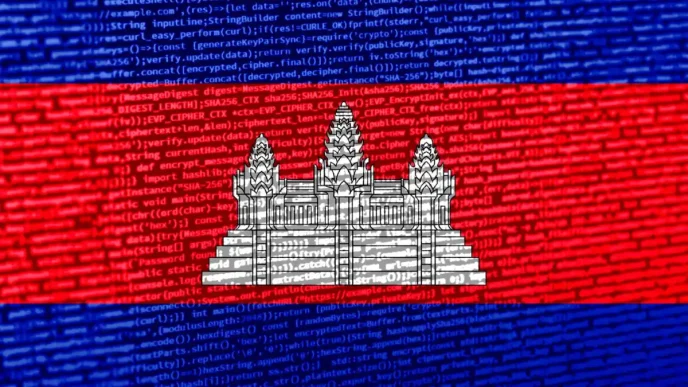Chinese President Xi Jinping embarked on a significant five-day tour of Southeast Asia this week, marking his first overseas trip of 2025 with state visits to Vietnam, Malaysia, and Cambodia. Announced by China’s Foreign Ministry, the visit underscores Beijing’s commitment to strengthening ties with its neighbors, promoting cooperation, and fostering mutual trust at a time of growing geopolitical tensions in the region. As Xi meets with leaders across these nations, analysts suggest the tour could reshape regional dynamics, offering both opportunities and challenges for Southeast Asian countries navigating China’s expanding influence.
A Strategic Outreach to Neighbors
The timing of Xi’s visit, which began on Monday, April 14, 2025, is notable. It follows a central conference in Beijing where China reaffirmed its neighborhood diplomacy principles of amity, sincerity, mutual benefit, and inclusiveness. Foreign Ministry spokesman Lin Jian emphasized this approach during a recent briefing, stating, “Neighboring countries are China’s priority in its diplomacy. China and Southeast Asian countries are good neighbors, good friends, and good partners with a shared future.” This rhetoric reflects Beijing’s intent to position itself as a stabilizing force in the region, countering perceptions of assertiveness in areas like the South China Sea.
Xi’s itinerary includes a packed schedule of high-level meetings, cultural exchanges, and strategic discussions. His first stop in Vietnam, spanning Monday to Tuesday, marks his fourth visit to the country since taking office in 2013. This year also commemorates the 75th anniversary of diplomatic relations between China and Vietnam, adding symbolic weight to the trip. During his last visit in late 2023, Xi and Vietnamese leaders pledged to build a “China-Vietnam community with a shared future,” a framework that both sides aim to reinforce during this tour. Lin expressed hopes that the visit would deepen practical cooperation and strategic trust, contributing to a broader vision of a shared future for mankind.
Vietnam: A Cornerstone of China’s Regional Policy
In Vietnam, Xi’s agenda focuses on strengthening the traditional friendship that has defined bilateral ties for decades. Despite historical tensions, including maritime disputes in the South China Sea, the two socialist nations share deep political and economic connections. China remains Vietnam’s largest trading partner, with bilateral trade reaching billions annually. However, Hanoi has also sought to diversify its partnerships, balancing relations with the United States, Japan, and the European Union to hedge against over-reliance on Beijing.
The current visit is expected to yield agreements on infrastructure projects and trade, building on the momentum of previous commitments. Analysts note that Vietnam’s leadership may use the opportunity to address concerns over border trade imbalances and seek assurances on disputed maritime boundaries. Yet, public sentiment in Vietnam remains mixed—while some view China’s investments as vital for economic growth, others harbor skepticism rooted in historical conflicts. As one Hanoi-based political commentator observed on social media, “China’s friendship comes with strings attached—Vietnam must tread carefully.”
Beyond economics, Xi’s discussions with Vietnamese leaders will likely emphasize political alignment. Both nations operate under single-party systems led by communist parties, providing a foundation for ideological cooperation. However, if unaddressed, underlying tensions could temper the outcomes of this leg of the tour, raising questions about the durability of the “shared future” narrative.
Malaysia: Elevating Ties in a Changing Landscape
Xi’s subsequent visit to Malaysia, his first in 12 years, is poised to be a landmark in China-Malaysia relations. Kuala Lumpur has emerged as a key partner in China’s Belt and Road Initiative (BRI), with major projects like the East Coast Rail Link symbolizing deepening economic ties. Foreign Ministry spokesman Lin highlighted expectations for enhanced political and security cooperation, alongside cultural exchanges and coordination on regional issues. He framed the visit as a chance for both nations, as influential developing economies, to contribute to the solidarity of the Global South.
Malaysia’s strategic location and role in ASEAN make it a critical node in China’s regional strategy. The visit could see announcements of new investments or trade pacts, reinforcing Malaysia’s position as a hub for Chinese technology and manufacturing firms. However, domestic concerns over debt risks tied to BRI projects linger, with some Malaysian policymakers advocating for greater transparency in agreements with Beijing. Additionally, Malaysia’s diverse population and multi-ethnic society add a layer of complexity to cultural exchanges, requiring careful navigation to avoid missteps.
For China, the visit offers a platform to counter narratives of economic coercion by showcasing mutual benefits. Yet, as geopolitical competition intensifies in the Asia-Pacific, Malaysia faces pressure to balance its ties with China against relations with Western powers. The outcomes of Xi’s meetings in Kuala Lumpur will likely signal how far Malaysia is willing to align with Beijing’s vision for regional development.
Cambodia: Deepening a Longstanding Alliance
The final leg of Xi’s tour takes him to Cambodia, a nation with which China shares a longstanding friendship. This visit, Xi’s first to Cambodia in nine years, builds on the Diamond Hexagon framework—a bilateral cooperation model covering politics, production capacity, agriculture, energy, security, and people-to-people exchanges. Lin noted that discussions would focus on five key areas: political trust, mutually beneficial cooperation, security guarantees, cultural exchanges, and strategic collaboration.
Cambodia has been one of China’s closest allies in Southeast Asia, benefiting from significant investments in infrastructure, including roads, ports, and energy projects. The relationship has delivered tangible outcomes for both peoples, with China’s support bolstering Cambodia’s economic growth. However, this close alignment has drawn scrutiny, with critics arguing that Cambodia’s dependence on Chinese funding compromises its sovereignty and fuels corruption. Reports of Chinese-backed projects displacing local communities have also sparked sporadic protests, though these are often downplayed by official narratives.
Xi’s visit is expected to reinforce the “China-Cambodia community with a shared future,” a concept Lin described as increasingly relevant in the new era. The two sides may announce initiatives to expand cooperation in agriculture and energy, sectors critical to Cambodia’s development. Yet, the visit also raises questions about the broader implications of China’s influence in Cambodia, particularly regarding regional security and Phnom Penh’s stance on issues like the South China Sea, where it has often echoed Beijing’s positions.
Regional Implications and Global Context
Xi Jinping’s Southeast Asia tour arrives at a pivotal moment. The region is a hotspot for great power competition, with the United States and its allies intensifying efforts to counter China’s influence through initiatives like the Quad and AUKUS. At the same time, ASEAN nations are grappling with internal challenges, from economic recovery post-pandemic to political instability in countries like Myanmar. China’s outreach, framed as a partnership of equals, contrasts with Western approaches often perceived as conditional or security-focused.
Economically, Xi’s visit could unlock new opportunities for trade and investment, particularly in infrastructure and technology. Projects under the BRI, already transformative in parts of Southeast Asia, may gain fresh momentum, though concerns over debt sustainability persist. Politically, China’s emphasis on mutual trust and non-interference resonates with leaders wary of external meddling, yet it also risks alienating publics who see Beijing’s actions as self-serving.
Security remains a contentious undercurrent. While China promotes peace and stability, its assertive posture in the South China Sea continues to unsettle neighbors like Vietnam and Malaysia, both of which have overlapping maritime claims with Beijing. Xi’s tour may include gestures to ease tensions—perhaps commitments to dialogue or joint resource development—but substantive progress seems unlikely without concessions that China has historically resisted.
Looking Ahead: Opportunities and Uncertainties
As Xi Jinping traverses Vietnam, Malaysia, and Cambodia, the stakes for Southeast Asia are high. His visit offers a chance to strengthen bilateral ties, boost economic cooperation, and project China as a benign regional leader. Yet, it also amplifies debates over the costs of alignment with Beijing, from economic dependencies to geopolitical trade-offs. For the nations hosting Xi, the challenge lies in leveraging China’s overtures while safeguarding national interests—a delicate balancing act in an increasingly polarized world.
Public reactions across the region will be telling. While official statements may herald the visit as a success, grassroots sentiments, often voiced on platforms like X, reveal a spectrum of hope, skepticism, and concern. As one user from Malaysia posted, “Xi’s visit could bring investment, but at what price to our independence?” Such questions underscore the broader uncertainties surrounding China’s regional ambitions.
For now, the outcomes of this tour remain to be seen. As leaders exchange toasts and sign agreements, the eyes of Southeast Asia—and the world—will be on whether Xi’s vision of a shared future can bridge divides or whether it will deepen the region’s fault lines. One thing is certain: China’s diplomatic push signals a renewed determination to shape the future of its neighborhood, leaving lasting implications for peace, prosperity, and power dynamics in the years ahead.














